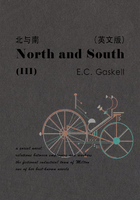Why We're Writing This Book and Why You Should Read It
Chances are, you picked up this book because one of the following descriptions applies to you:
? You're an entrepreneur or investor seeking practical ways to profit from new enterprises in emerging markets.
? You're an executive at a major transnational corporation who understands that your company's long-term sustainability depends on its ability to gain a major share of the billions of potential customers at the bottom of the pyramid.
? You're an eyewitness to severe poverty as a citizen of an emerging nation and hope to relieve that suffering through business.
? You're a development practitioner working for an overseas development agency, your government, an NGO, the United Nations, or some other multilateral organization.
? You're a designer of products and services who wants to learn about “design for the other 90 percent.”
? You're a teacher or student in an undergraduate or graduate course of study in business, social enterprise, international affairs, economic development, area studies, design, or poverty.
? You're a philanthropist or impact investor who's seeking the most effective ways to make your money count in addressing global poverty.
? You're a concerned citizen who wants to know how something effective can be done to narrow the inequities between rich and poor.
? You simply want to understand better what life is like in countries poorer than your own — and how conditions there might be improved.
If one of these statements fits, you're in the right place.
???
We're writing this book to share a set of ideas that we believe — in fact, we know — can help end poverty for hundreds of millions of families around the world who are now subsisting on $2 a day or less.
While this book has major policy implications, it isn't intended for the eyes and ears of decision makers at the World Bank, the United Nations, the White House, Zhongnanhai, or 10 Downing Street. Both of us inhabit the world of business. Although we don't overlook the impact of high-level policy choices — far from it!; we'll even address some of those choices — we believe that the greatest potential for reducing poverty in today's global environment lies in the power of business. Most of the pages that follow showcase our ideas about how business, both new ventures and existing companies, can substantially lessen the impact of world poverty … while making a lot of money in the process.
Here's our proposition in a nutshell:
? The estimated 2.7 billion people who live on $2 a day or less constitute an enormous untapped market.[1] Six years ago, the International Finance Corporation and the World Resources Institute estimated the collective purchasing power of the four billion people they define as the “bottom of the pyramid” at $5 trillion.[2] And as millions of these people move out of poverty, their purchasing power will double and triple.
? Businesses will thrive if they offer products and services that meet the needs of the bottom billions for quality, reliability, and, above all, price. Conversely, companies that don't quickly learn to operate effectively at scale in this market will lose out to the companies that do.
? In fact, companies that want to extend their reach into emerging markets must first aim to serve $2-a-day customers — tomorrow's middle class — and later move up the pyramid. Approaching the problem from the top down has almost never worked, as you'll understand better after you read this book.[3]
???
Several years ago, Berrett-Koehler Publishers released Paul Polak's Out of Poverty. Based on Paul's then quarter-century of experience working with $1-a-day farmers in developing countries, Out of Poverty described how Paul and the staff of the market-driven nonprofit organization he founded in 1981, International Development Enterprises (IDE), had lifted 17 million rural people into the middle class by rigorously applying practices they developed in the field in India, Bangladesh, Nepal, Somalia, Zambia, Zimbabwe, and other underdeveloped nations. The products and services they introduced — including the treadle pump, low-cost drip irrigation, and new agricultural marketing practices — were revolutionary because they were market-driven and designed for and with $1-a-day farmers, and, not incidentally, because they worked.
The Business Solution to Poverty represents the evolution of Paul Polak's thinking since he wrote Out of Poverty, refined and augmented by Mal Warwick's three decades of experience founding and running businesses, more than 20 years as an active member and 4 years as chair of Social Venture Network, and investing in a variety of companies. Together, the two of us have spent 150 years on planet Earth. We've accumulated a significant range of additional experience — from Mal's three years in the Peace Corps in rural Ecuador in the 1960s, plus later travel and teaching in Asia, Africa, Eastern Europe, and Latin America, to Paul's years as a pioneer in the field of community psychiatry in the 1960s and 1970s and a lifetime of success in business, beginning at the age of 10. We certainly don't pretend to be omniscient, but we've learned a few things.
There are two significant conceptual differences between this book and Out of Poverty. First, we are writing not just about the poorest of the poor, the one billion or so who live on $1 or less a day who were the focus of Paul's first book, but also about another 1.7 billion people who struggle to make ends meet on up to $2 a day. These 2.7 billion people qualify as an enormous potential market by any definition. Second, when Paul wrote Out of Poverty, he felt that it made little sense to undertake a project (such as the introduction of low-cost drip irrigation) unless it could be scaled to reach at least one million people. The Business Solution to Poverty envisions businesses with at least 100 million customers, thus addressing one of the central issues in economic development for over more than half a century: scale. We believe we have found the answer to the challenge of scale in the ability of businesses to marshal substantial capital and specialized talent and to manage operations of considerable scope. These are the built-in advantages of the private sector that we propose to take advantage of in a new breed of businesses: profitable ventures capable of harnessing both a revolution in design for the other 90 percent that's centered on the ruthless pursuit of affordability, and a revolution in decentralized village supply chains and aggregation strategies.
As you read the pages that follow, you'll make up your own mind about our thesis. We hope you'll let us know what you think. You can contact us at www.businesssolutiontopoverty.com or at www.bkconnection.com/businesssolutiontopoverty, where you'll find resources and other material to enhance your understanding of the issues we raise in this book.
To be as clear as possible, we're sharing our ideas in The Business Solution to Poverty not merely to contribute to public discourse about the challenges of development but to offer a roadmap to entrepreneurs and existing businesses interested in the bottom billions as potential customers. We sincerely hope you won't hesitate to use our ideas as a launching pad for your own ventures that serve the poor. Don't worry about stealing our ideas: we'll be flattered.
Paul Polak
Golden, Colorado
Mal Warwick
注释:
[1]Estimates of this number span a wide range. For example, “More than one-half of the world's people live below the internationally defined poverty line of less than US $2 a day — including 97 percent in Uganda, 80 percent in Nicaragua, 66 percent in Pakistan, and 47 percent in China, according to data from the World Bank.” Population Reference Bureau, 2005 World Population Data Sheet.
However, we place more trust in the figure used in Portfolios of the Poor: How the World's Poor Live on $2 a Day: “Over 2.7 billion people in the world live on $2 or less a day.” Daryl Collins, Jonathan Morduch, Stuart Rutherford, and Orlanda Ruthven (Princeton, NJ: Princeton University Press, 2009).
[2]International Finance Corporation and World Resources Institute, The Next 4 Billion: Market Size and Business Strategy at the Base of the Pyramid, March 2007.
[3]By contrast, some public health and educational programs have been remarkably successful, as we discuss in chapter 3.
Berkeley, California













